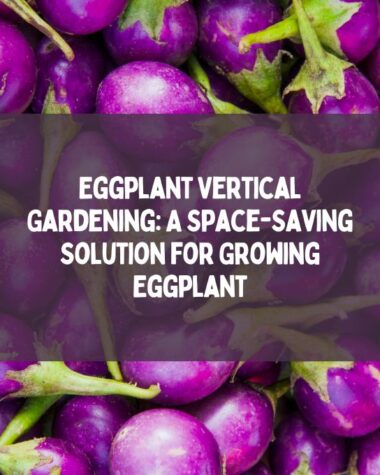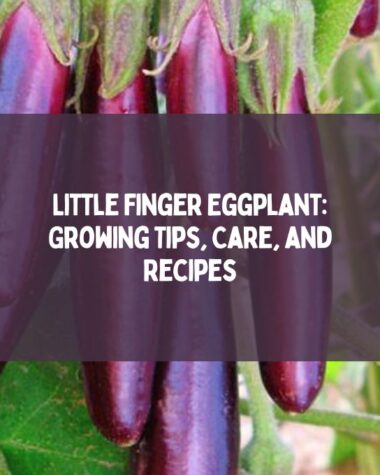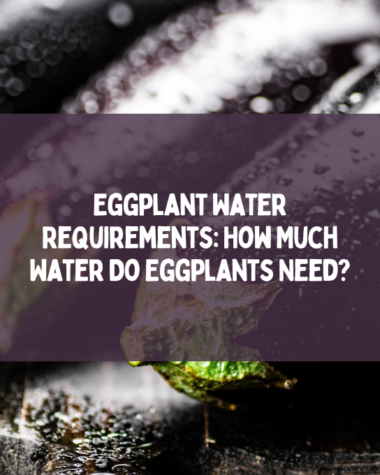Proper Eggplant spacing allows the plants to receive the necessary amount of sunlight, water, and nutrients. Which can help prevent diseases and increase your garden’s productivity.
Eggplant is a versatile and delicious vegetable that is commonly used in various cuisines around the world. Whether you’re a seasoned gardener or a beginner, knowing the proper spacing for your eggplant plants can significantly affect their growth and yield.
In this article, I will provide the ultimate guide to eggplant spacing. I will explain why spacing is crucial, what factors to consider when deciding on spacing, and how to implement proper spacing for your eggplant plants.
I will also discuss how to maintain healthy and productive eggplant plants, including tips on pruning and fertilizing. By following the advice in this article, you’ll be able to maximize your eggplant harvest and enjoy delicious eggplant dishes all season long.
Understanding Eggplant Spacing
Eggplant spacing refers to the distance between individual eggplant plants when planted in the ground. It is essential to have proper spacing to ensure the plants have enough space to grow and receive adequate sunlight, water, and nutrients.
What is the Ideal Spacing For Eggplants?
The ideal spacing for eggplants can vary depending on the variety and growing conditions. Generally, eggplants should be spaced around 18-24 inches apart in rows that are spaced 30-36 inches apart.
However, larger varieties may require more space, while smaller varieties can be planted closer together. It’s essential to consider the mature size of the plant, as well as the growth habit when deciding on spacing.
How Spacing Affects The Growth And Development Of Eggplants
Spacing affects the growth and development of eggplants in several ways. When plants are spaced too closely, they can compete for water, nutrients, and sunlight.
This can lead to stunted growth, reduced yields, and an increased risk of diseases. Proper spacing allows each plant to develop a robust root system and grow to its full potential.
How To Measure And Mark The Planting Spots?
To measure and mark eggplant planting spots, measure the distance between rows using a tape measure or ruler. Mark the rows with stakes or flags. Then, use a measuring tape or ruler to mark the distance between plants within the row.
You can use a little stick or marker to indicate the planting spot for each seedling. This will help ensure that each plant is evenly spaced and has enough room to grow.
Understanding the importance of eggplant spacing and implementing proper spacing techniques can help your plants grow healthy.
Related Read
- How To Harvest Cucumbers In Containers?
- Can You Grow Pumpkins In Containers?
- How Big Of A Pot For Tomatoes? Ideal Container Size For Tomato Plants
Factors to Consider When Spacing Eggplants In your Garden
Soil type and fertility play a crucial role in determining eggplant spacing. Before planting, it’s essential to ensure the soil is well-draining and has adequate nutrients.
If the soil is compacted or lacks nutrients, the plants may struggle to grow, and closer spacing may be necessary to ensure access to adequate resources. However, plants can be spaced further apart if the soil is fertile and well-draining.
Climate and weather
Climate and weather conditions also affect eggplant growth and development. Eggplants thrive in warm temperatures, with optimal growth occurring between 70-85°F.
In cooler climates or during colder seasons, plants may require closer spacing to ensure they receive enough warmth and sunlight. In contrast, during hot, dry weather, plants may benefit from more space to allow for better air circulation and reduce the risk of diseases.
Varieties of eggplants
The spacing requirements for eggplants can also vary depending on the variety. Compact or dwarf varieties can be planted closer together, while larger or vining varieties require more space.
For example, smaller varieties like Fairy Tale Eggplants can be planted as close as 12-14 inches apart. In comparison, larger varieties like Black Beauty or Long Purple may require up to 24 inches of spacing between plants.
Companion planting
Companion planting can also affect eggplant spacing. Some plants, such as herbs like basil, can act as natural pest repellents for eggplants and can be planted alongside them. In this case, eggplants can be spaced slightly closer to accommodate the companion plants.
However, other plants like fennel can adversely affect eggplant growth and should be avoided as companion plants.
Overall, when considering eggplant spacing, it’s essential to consider factors such as soil type and fertility, climate, weather conditions, eggplant variety, and companion planting. To ensure the plants have the space and resources they need to grow and produce a bountiful harvest.
Related Reading
- How To Grow Eggplants In Containers – Aubergine Container Gardening
- Eggplant Vertical Gardening: A Space-Saving Solution for Growing Eggplant
- 18 Common Aubergine Growing Problems and Their Solutions
Techniques for Spacing Eggplants
There are several techniques for spacing eggplants, each with its advantages and considerations.
Traditional planting
The conventional way of planting eggplants involves creating rows spaced 30-36 inches apart, with individual plants spaced 18-24 inches apart within the row. To plant, dig a hole twice the width of the root ball and the same depth.
Place the seedling in the hole and cover it with soil, firming the soil around the plant. Repeat for each seedling, spacing them according to the recommended spacing.
Raised beds
Planting eggplants in raised beds can provide several advantages, such as improved drainage, better soil quality, and easier access to harvesting.
To plant in raised beds, create a raised bed at least 6 inches deep, and add a mixture of soil, compost, and other organic matter. Space the plants according to the same guidelines as traditional planting.
Intercropping
Intercropping involves planting eggplants alongside other crops to maximize the use of space and resources. For example, you could intercrop eggplants with herbs like basil or flowers like marigolds, which can act as natural pest repellents.
When intercropping, consider both crops’ spacing requirements and ensure they have enough space and resources to grow and thrive.
Container gardening
Planting eggplants in containers can be an excellent option for those with limited space or who want the flexibility to move plants around.
For container gardening, use a pot at least 12 inches wide and 12 inches deep, with drainage holes. Plant one seedling per pot and space multiple pots according to the recommended spacing for traditional planting.
Providing adequate water and nutrients for the plants and monitoring for pests and diseases is essential in all techniques. Choosing the correct spacing technique and implementing proper spacing can help your eggplants grow healthy and produce a bountiful harvest.
Conclusion
Eggplant growth and yield depend on spacing. The ideal spacing method depends on soil type, climate, eggplant variety, and companion planting. Traditional planting, raised beds, intercropping, and container gardening is choices depending on space and budget.
After planting, eggplants need care to develop well and produce well. Remember to fertilize, water, prune, and manage pests and diseases.
Following these rules, you may harvest a lot of tasty, healthy eggplants. With correct spacing and care, eggplants will grow and yield a lot.
Happy Gardening!







